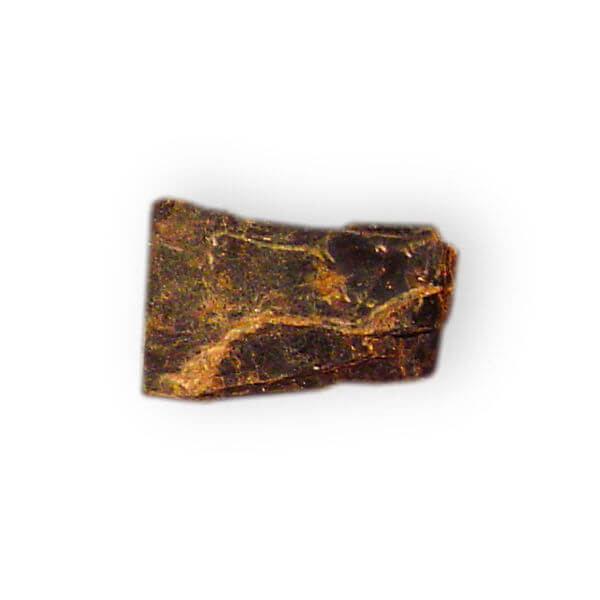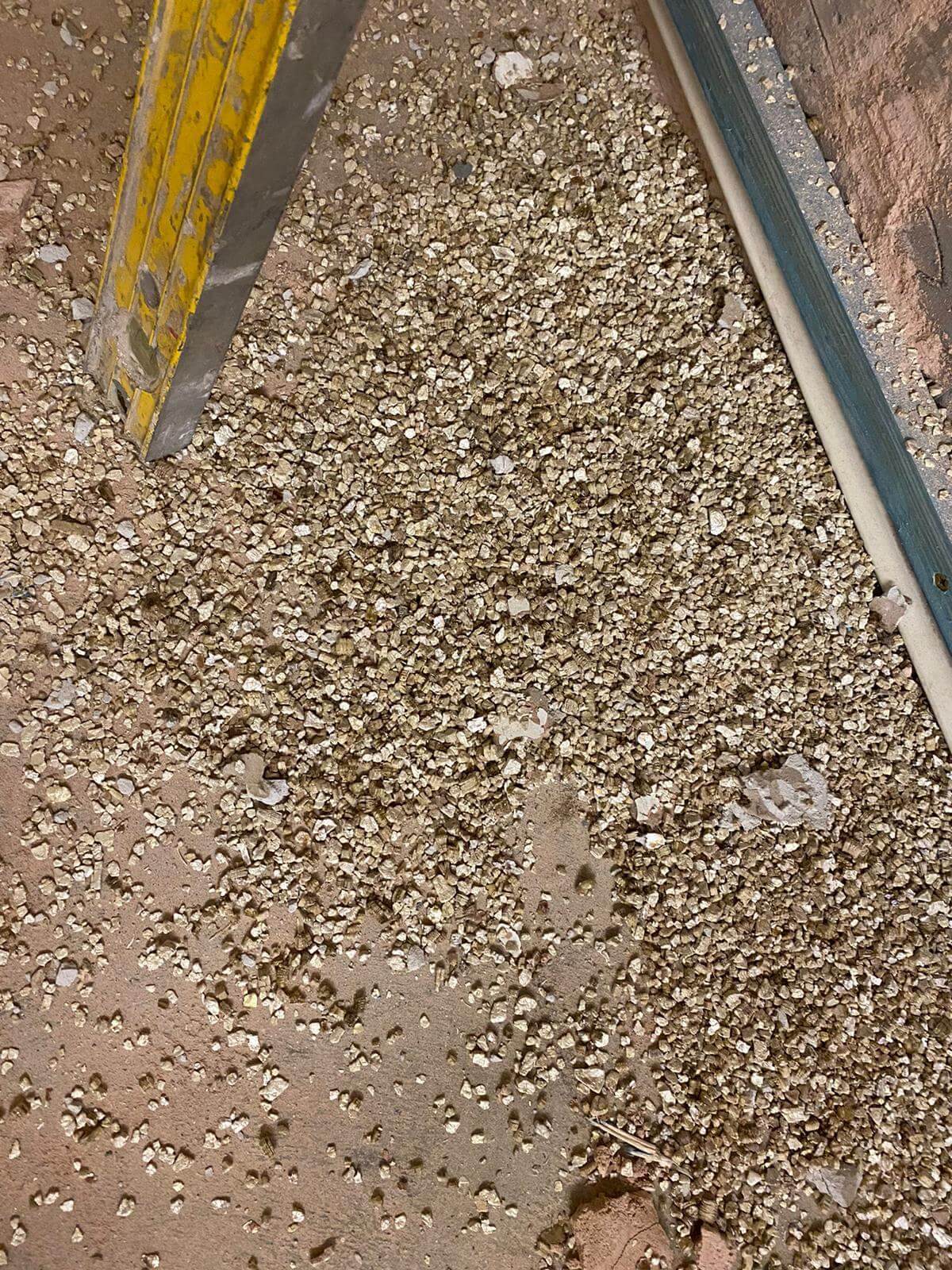Debunking Myths: Does Vermiculite Insulation Contain Asbestos?
Last Updated on 8 February 2024
Do you have any worries regarding the presence of asbestos in vermiculite insulation in your home and its potential dangers? Concerns regarding potential health risks and asbestos contamination have caused numerous homeowners to question the safety of this widely used insulating material. Our goal in this blog is to dispel misconceptions about vermiculite insulation and equip you with accurate information to help you make a well-informed choice.
In this article, we will explore the potential hazards of vermiculite insulation, provide guidance on how to handle and remove it safely, and consider alternative insulation choices. We aim to provide you with the necessary information to make informed decisions.
Stay with us as we uncover the truth about vermiculite insulation and distinguish between fact and fiction.
What is Vermiculite Insulation?
Vermiculite is a mineral that occurs naturally and is extracted from various deposits across the globe. Until the late 1980’s, it was extensively utilised in the construction industry as insulation in both residential and commercial properties. Vermiculite insulation is mainly made up of a flaky natural material known as vermiculite, which expands when exposed to heat. The expansion process leads to the formation of air pockets within the vermiculite, which contributes to its impressive thermal insulation properties.
Nevertheless, despite the advantages, there have been some concerns raised regarding the potential hazards and health risks linked to vermiculite insulation.
One of the main reasons why vermiculite insulation is so popular is because of its versatility, wide availability, affordability, and excellent insulation properties. It is commonly used in a wide range of applications, such as attic insulation, wall insulation, around fires, heaters, tanks, and even in horticulture as a soil amendment. Its ability to resist fire makes it a highly desirable option for enhancing energy efficiency and safeguarding against the transfer of heat.
Vermiculite insulation was frequently utilised in older homes as a loose-fill insulation material. It gained popularity in the mid-20th century because of its impressive thermal insulation capabilities and affordability.
In addition, vermiculite insulation offers the flexibility to be used as an insulation filler in smaller areas of a property, allowing for customised thermal protection.

Vermiculite mineral rock in its raw form
Potential Hazards of Vermiculite Insulation in the UK
An important concern regarding vermiculite insulation is its potential link to asbestos. Over the years, there have been significant health concerns surrounding asbestos, which has sparked past controversies and continues to be a matter of ongoing vigilance in the construction industry.
Asbestos, a mineral fibre, is well-known for its detrimental impact on health, leading to the development of severe respiratory diseases and death. In the past, some vermiculite-based insulation products utilised asbestos as a fireproofing material.
So It is crucial to have a clear understanding of the potential hazards linked to vermiculite insulation and to take appropriate measures to protect oneself.
Is it possible for vermiculite to become contaminated with asbestos?
Asbestos deposits can naturally occur alongside vermiculite during the mining process. A significant source of vermiculite originates from a mine situated in Libby, Montana, within the United States. This mine has a rich history as the largest supplier of vermiculite for insulation in North America. Unfortunately, the vermiculite from this mine was discovered to contain naturally occurring amphibole. This is a type of asbestos, and the fibres can pose serious health hazards if inhaled.
In addition to the Libby mine, there are various other vermiculite deposits located worldwide. These mines are located in South Africa, China, Australia, and Brazil, among other places. The vermiculite sourced from these mines is widely regarded as safe, as it does not contain any traces of asbestos. However, it makes sense not to rely on assumptions of ‘safety’.
Even so, there has been a growing concern about the presence of this dangerous mineral in older vermiculite insulation, as it can potentially lead to airborne exposure during installation, maintenance, or removal.
When any insulation containing asbestos is disturbed, it can release asbestos fibres into the air, which can pose a risk to human health. Breathing in these fibres can result in significant health hazards, including lung cancer, mesothelioma, and asbestosis.
It’s worth mentioning that not all vermiculite insulation contains asbestos, and confirming its presence requires specialised testing. Modern vermiculite insulation products are subjected to extensive testing and quality control measures to guarantee their safety.
In general, vermiculite insulation is a highly effective and versatile option for insulating your home. Nevertheless, It is important to be cautious and verify that any installed prior to the 2000 does not contain asbestos. In the UK all asbestos use was banned in November 1999.
Identifying and Handling Vermiculite Insulation
Historical practices in the UK have led to a concerning possibility that a considerable amount of vermiculite insulation may contain traces of asbestos. While it is true that not all vermiculite insulation is contaminated, homeowners should be aware of the potential presence of this harmful mineral in older vermiculite products.
Distinguishing vermiculite insulation that contains asbestos can be quite difficult. This is because it closely resembles non-contaminated vermiculite insulation. So, if you think your home might have vermiculite insulation, it’s a good idea to get it tested for asbestos by a professional asbestos surveyor. Experts in the field can securely gather samples and send them to an accredited laboratory for analysis.
Removing asbestos-containing vermiculite insulation
If it is determined that the vermiculite insulation in your home contains asbestos, it is extremely important to take the necessary steps to have it safely removed. Properly handling vermiculite insulation that contains asbestos is crucial to ensure a safe removal process and minimise the potential for asbestos exposure.
Consequently, It is important that the process is handled by appropriately trained or licensed individuals, who have the required knowledge and are properly equipped with personal protective equipment (PPE) like respiratory masks, gloves, and coveralls. This ensures that there is no direct contact with the insulation and minimises the risk of inhaling any airborne asbestos fibres.
It is important to take necessary precautions to prevent the spread of asbestos particles to other areas of the property.
Furthermore, it is crucial to ensure the proper disposal of the removed vermiculite insulation. It is important to securely seal asbestos-contaminated materials in containers that are leak-tight and properly labelled. These materials should then be transported to licenced facilities for appropriate disposal.
It is strongly discouraged to attempt the removal of vermiculite insulation containing asbestos without professional assistance, as it can be highly risky.
Given the possible hazards linked to vermiculite insulation, certain homeowners choose to explore alternative options for insulation, such as spray foam insulation or mineral wool insulation. These contemporary options provide excellent insulation and do not raise the same worries about asbestos.
Ultimately, vermiculite insulation can serve as a reliable and secure option for home insulation. However, it is crucial for homeowners to remain vigilant about the potential risks linked to asbestos contamination. Staying informed, following recommended safety procedures, and seeking professional guidance are essential when dealing with vermiculite insulation.
Also prior to any building or refurbishment work in a home, an appropriate asbestos survey should be undertaken as a matter of course.

Vermiculite insulation found in the attic of a UK house built in 1980. Most probably contains asbestos.
Where Can Vermiculite Insulation be typically found?
Vermiculite insulation is commonly used in both residential and commercial buildings constructed prior to the 1990’s. Its lightweight and fire-resistant properties have made it a popular choice for insulation purposes. These are some typical areas where vermiculite insulation might have been utilised:-
1. Attics
Attics often contain vermiculite insulation, which serves as a thermal barrier to regulate temperature and minimise energy loss or gain. It effectively fills in gaps and crevices, creating a layer of insulation. It can also be found around water tanks.
2. Walls
Using vermiculite insulation in wall cavities can significantly improve the energy efficiency of a building. Its unique flexibility and adaptability make it ideal for insulating walls.
3. Roofs
Roof structures sometimes incorporated vermiculite insulation to enhance thermal insulation and potentially bolster the roof’s fire resistance. It can effectively regulate temperature changes and lead to significant energy conservation.
4. Fires, Heaters etc.
Older boilers, electric fires, heaters etc. can contain vermiculite
The Advantages of Spray Foam Insulation V’s Vermiculite
Spray foam insulation provides a wide range of benefits compared to vermiculite insulation, making it a practical choice for homeowners. The following are considered advantages and safety measures of spray foam insulation:-
Unmatched Insulation Performance
Spray foam insulation is known for its outstanding insulating properties, which provide a significant advantage. It creates a smooth barrier that efficiently seals gaps, cracks, and crevices, stopping heat loss and air infiltration. As a result, energy consumption is reduced, utility bills are lower, and indoor comfort is improved.
Protective Shield Against Air and Moisture
Spray foam insulation effectively seals off air and moisture, ensuring a draft-free environment and reducing the chances of condensation in the building envelope. By ensuring a tight seal and managing moisture levels, it aids in maintaining a steady indoor temperature and minimising the risk of mould and water damage.
Improved Noise Reduction
Spray foam insulation also offers impressive soundproofing capabilities. The foam’s dense and expansive properties work to effectively minimise airborne noises, including traffic sounds and neighbourhood disturbances, resulting in a living environment that is noticeably quieter and more peaceful.
Ensuring Long-Term Durability
Unlike vermiculite insulation, spray foam insulation is known for its durability and ability to maintain its insulation performance over time. It sticks securely to surfaces, creating a long-lasting and smooth coating that will not droop or compress, guaranteeing reliable thermal insulation for many years.
Features for Ensuring Safety
Spray foam insulation is highly regarded for its exceptional safety features. After undergoing the appropriate curing process, this product ensures that no harmful fibres or particles are released into the air, reducing the chances of respiratory problems or allergies. In addition, spray foam insulation does not attract pests, which helps to minimise the risk of infestations.
What to do if a survey confirms presence of asbestos
If you have conducted a survey or assessment that confirms your suspicion of vermiculite insulation containing asbestos in your property, it is of utmost importance to take immediate action to ensure the safety of yourself and your family. These are the necessary steps to take when confronted with this situation:-
1. Remain composed and avoid disrupting the insulation
Firstly, when asbestos fibres are released into the air, they pose a significant threat to human health and can lead to serious medical conditions if inhaled. It is extremely important to refrain from disturbing the vermiculite insulation, including any attempts to remove or touch it.
2. Restrict Entry to the Impacted Zone
Next, It would be advisable to limit access to the area where the vermiculite insulation is located, if feasible. This will assist in avoiding unintended contact with asbestos fibres and minimising the potential for contamination in other areas of your property.
3. Consider consulting with a professional for assistance
Get in touch with an expert in asbestos removal and disposal to ensure the safe handling of asbestos-containing materials. It is essential to hire skilled and authorised professionals to guarantee proper handling and compliance with legal regulations.
4. Notify the appropriate individuals
It is important to inform all necessary individuals, including your family members, tenants, or employees, about the existence of asbestos in your property. Ensure that they steer clear of the area and are taking all necessary precautions.
5. Adhere to the Guidelines for Asbestos Removal
Collaborate with experts when undergoing asbestos removal. They will adhere to specific protocols and safety procedures to minimise the possibility of being exposed to any risks. It is absolutely essential to adhere to their instructions and recommendations.
6. Perform a Post-Removal Inspection
Finally, following the removal process, it is advisable to engage an impartial inspector to evaluate the area and confirm the complete elimination of asbestos.
It is important to keep in mind that handling vermiculite insulation that contains asbestos requires a high level of expertise and caution. In addition, It is strongly advised against trying to remove or handle the material on your own, as doing so can result in severe health risks. By following the steps mentioned above and seeking professional assistance, you can ensure a successful and secure resolution of this issue.
Summary
In summary, It is essential for homeowners and property owners to have a clear understanding of the potential risks that come with some vermiculite insulation. Although vermiculite insulation is not inherently dangerous, its connection to asbestos is a cause for concern.
When vermiculite insulation that has been contaminated with asbestos is disturbed or has deteriorated in condition, it can have severe health consequences if any fibres become airborne.
It’s worth mentioning that not all vermiculite insulation contains asbestos. However, considering the past mining of vermiculite, there is a chance that older vermiculite insulation may contain traces of this harmful mineral.
Ensuring the safety and well-being of occupants should be a top priority, and it is important to address any potential risks that may be associated with vermiculite insulation.
By staying well-informed, taking necessary precautions, and seeking professional guidance when necessary, homeowners can make educated decisions and establish healthier living environments.
Frequently Asked Questions
Q: Is vermiculite insulation commonly found in homes?
A: Yes, vermiculite insulation containing asbestos was frequently used in homes constructed prior to the year 2000, but more widely much earlier, especially in attics and wall cavities.
Q: What are the signs that my insulation may contain asbestos?
A: Although a visual inspection may provide some hints, it is advisable to hire a professional to conduct asbestos testing, in order to confirm the presence of asbestos in your insulation.
Q: Is it safe for me to remove vermiculite insulation that contains asbestos on my own?
A: It is strongly advised against attempting to remove vermiculite insulation asbestos on your own due to the significant risk of exposure. It is crucial to always hire qualified professionals for safe and effective asbestos removal.
Q: What are the potential health hazards associated with exposure to vermiculite insulation containing asbestos?
A: Exposure to asbestos fibres from Vermiculite insulation contaminated with asbestos can cause severe respiratory conditions like asbestosis, lung cancer, and mesothelioma due to exposure to asbestos fibres.
Q: What is the cost of removing vermiculite insulation containing asbestos from a home?
A: The price for asbestos removal can differ based on various factors, including the size of the affected area and the level of contamination. Therefore, It is advisable to seek quotes from licenced contractors specialising in asbestos removal.
Q: Is it possible to safely encapsulate vermiculite insulation containing asbestos instead of removing it?
A: Although encapsulation can be considered, it might not offer a long-term solution. As a result, It is often advised to remove asbestos in order to eliminate the potential dangers associated with exposure to asbestos fibres.
Need professional advice?
We hope you found our article on vermiculite insulation both useful and informative. If you need any help or advice at all then we’ll be very happy to assist you. Give us a call and our experts will give you some advice and guidance on whatever if is you’re concerned about.
Please contact us on 0800 141 2676, email us at info@rbasbestos.co.uk or fill in the form below.
Our professional surveyors conduct inspections and surveys every day across the UK on all types of properties, both residential and commercial, for private home owners and commercial property Managers and owners. So when it comes to managing ACMs in your property, you’re in very safe hands with RB!!

